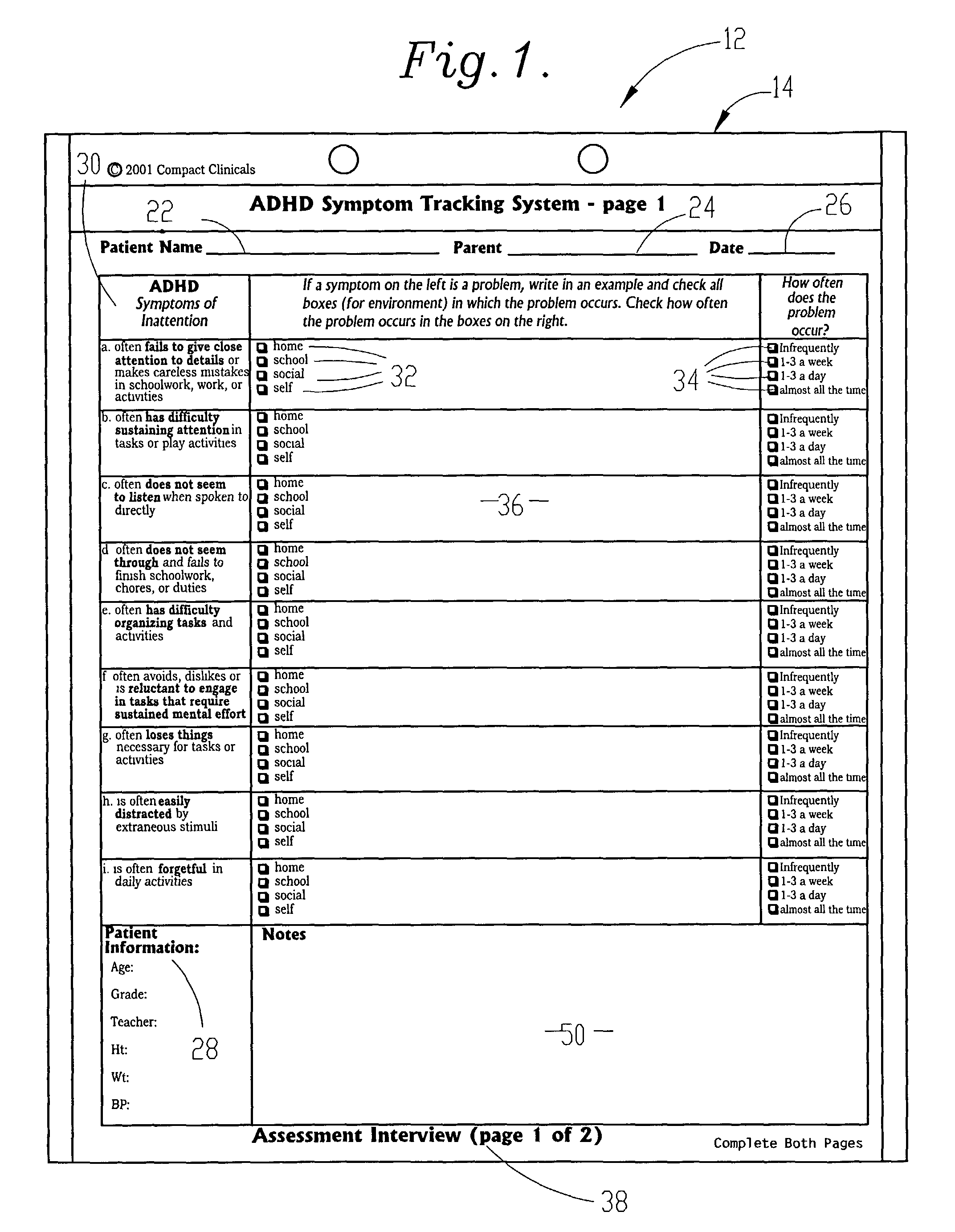Patient conditional diagnosis assessment and symptom tracking system
- Summary
- Abstract
- Description
- Claims
- Application Information
AI Technical Summary
Benefits of technology
Problems solved by technology
Method used
Image
Examples
Embodiment Construction
[0031]As required, detailed embodiments of the present invention are disclosed herein; however, it is to be understood that the disclosed embodiments are merely exemplary of the invention, which may be embodied in various forms. Therefore, specific structural and functional details disclosed herein are not to be interpreted as limiting, but merely as a basis for the claims and as a representative basis for teaching one skilled in the art to variously employ the present invention in virtually any appropriately detailed structure.
[0032]Referring now to the drawings, FIGS. 10 and 11 depict a patient conditional diagnosis, assessment and symptom tracking method 10 in accordance with the present invention. FIGS. 1–9 depict an exemplary patient assessment interview instrument 12 for use in diagnosing patients with Attention Deficit Hyperactivity Disorder (ADHD). The interview instrument 12 includes a joint-use portion 14 (FIGS. 1–2 except spaces 50 and 52 and FIGS. 5–6), a diagnostic or c...
PUM
 Login to View More
Login to View More Abstract
Description
Claims
Application Information
 Login to View More
Login to View More - R&D
- Intellectual Property
- Life Sciences
- Materials
- Tech Scout
- Unparalleled Data Quality
- Higher Quality Content
- 60% Fewer Hallucinations
Browse by: Latest US Patents, China's latest patents, Technical Efficacy Thesaurus, Application Domain, Technology Topic, Popular Technical Reports.
© 2025 PatSnap. All rights reserved.Legal|Privacy policy|Modern Slavery Act Transparency Statement|Sitemap|About US| Contact US: help@patsnap.com



